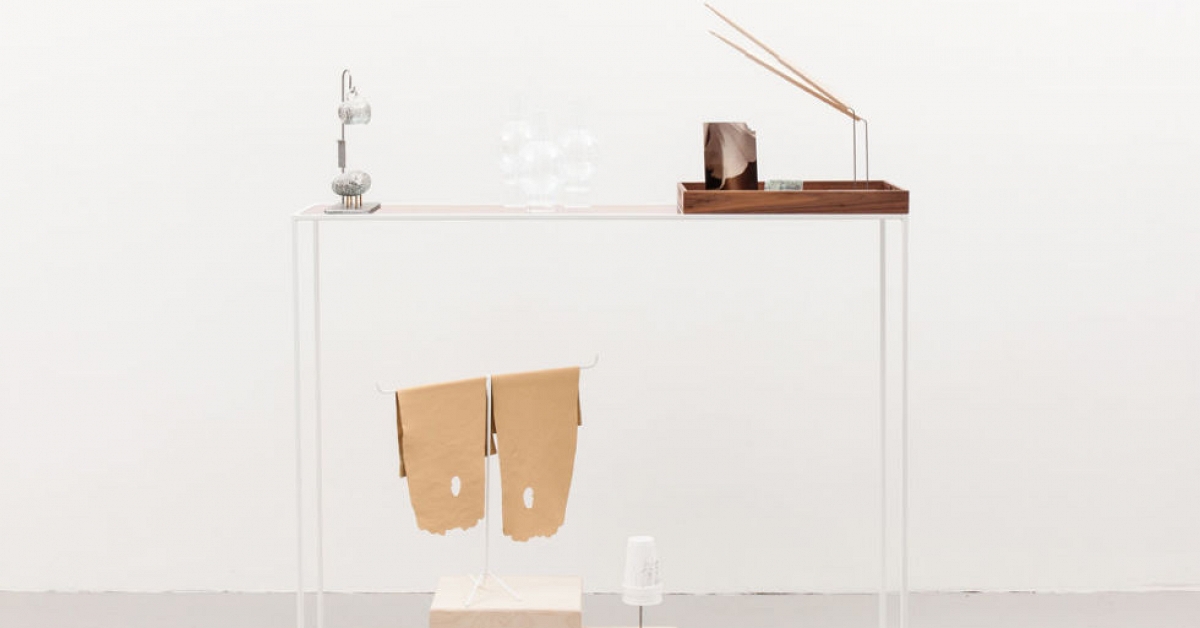Features: Kay Hofmann, “pour toujours"
Visual Art Source / Mar 2, 2019 / by Robin Dluzen / Go to Original
Kay Hofmann
Patron Gallery, Chicago, Illinois
Recommendation by Robin Dluzen
Continuing through March 9, 2019
Kay Hofmann’s exhibition, “pour toujours,” showcases the perfect marriage of material, craft and symbolism in the artist’s six-decade long practice. Selections of her hand-carved stone and wood sculptures run from the 1950s through just last year, though at a glance one would never know that decades separated some of them, so consistent is Hofmann’s style and technique over the years. From masses of alabaster, African Black Stone, terracotta and wood come ample figures, their limbs often intertwined, rounded and polished to a high shine, contrasted by the matte, organic forms that envelop and ground them.
From one side of “Windflower” (1989) a pair of shapely, stylized figures are depicted in such a deep embrace that their limbs wrap around each other to form seemingly one entity. From the other side the interclasped bodies morph into a yawning floral form, the alternating bands of rose and ivory of the Mexican Strawberry Alabaster creating the illusion of rippling, radiating energy from the intensity of the couple’s union. In “Cool Breeze” (undated) a single figure is shrouded by billowing sheets rendered in matte, textured alabaster, with only gleaming thighs and flowing hair visible. Through her masterful ability to create movement from stoic material, “Cool Breeze” emanates the sensation of a forceful wind from behind, simultaneously blinding, protecting and driving the figure ever forward.
Patron Gallery, Chicago, Illinois
Recommendation by Robin Dluzen
Continuing through March 9, 2019
Kay Hofmann’s exhibition, “pour toujours,” showcases the perfect marriage of material, craft and symbolism in the artist’s six-decade long practice. Selections of her hand-carved stone and wood sculptures run from the 1950s through just last year, though at a glance one would never know that decades separated some of them, so consistent is Hofmann’s style and technique over the years. From masses of alabaster, African Black Stone, terracotta and wood come ample figures, their limbs often intertwined, rounded and polished to a high shine, contrasted by the matte, organic forms that envelop and ground them.
From one side of “Windflower” (1989) a pair of shapely, stylized figures are depicted in such a deep embrace that their limbs wrap around each other to form seemingly one entity. From the other side the interclasped bodies morph into a yawning floral form, the alternating bands of rose and ivory of the Mexican Strawberry Alabaster creating the illusion of rippling, radiating energy from the intensity of the couple’s union. In “Cool Breeze” (undated) a single figure is shrouded by billowing sheets rendered in matte, textured alabaster, with only gleaming thighs and flowing hair visible. Through her masterful ability to create movement from stoic material, “Cool Breeze” emanates the sensation of a forceful wind from behind, simultaneously blinding, protecting and driving the figure ever forward.






